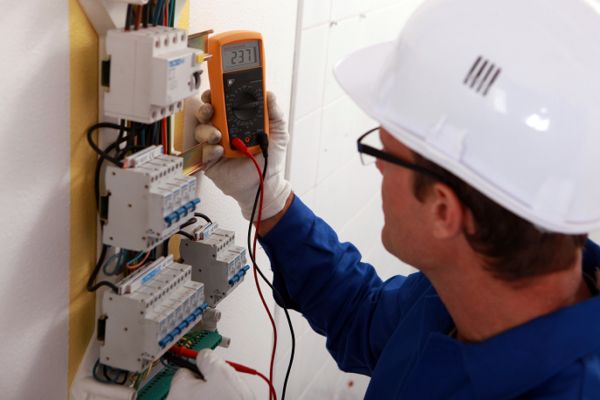Electrical Shock

An electric shock is the tingling sensation or muscular contraction that a person experiences when an electrical current passes through the body. An electric shock can severely burn or kill if the muscle contraction is severe enough to stop the heart. This muscle contraction will in many cases cause the victim to remain firmly gripped to the source of electrocution, particularly where power tools or leads are being used.
The human body conducts electricity. Even low currents may cause severe health effects. Spasms, burns, muscle paralysis, or death can result depending on the amount of the current flowing through the body, the route it takes, and the duration of exposure.
Effects of Electrical Shock | |
| Effect | DC Current (mA) |
| Death | 120+ |
| Ventricular Fibrillation | 50-120 |
| Paralysis of Diaphragm | 20-50 |
| Makes hands "clamp-on" | 16-20 |
| Involuntary Reflexes | 4-9 |
| Perception | 1-4 |
In the event of a worker receiving an electric shock it is vital that fellow workers act swiftly to attempt to limit the damage caused to the victim. Call emergency services immediately so they are on the way prior to trying to release the victim.
Releasing a Victim From Live Electric Current
When a person comes into contact with a live electrical circuit of sufficient voltage to cause an electric shock you first priority is to eliminate the flow of current. This typically is not just turning off the machine, equipment or tool . . . you must break the current at the source by switching off the circuit or by removing the plug from the socket in the case of a power tool.
On some occasions this may not be possible to do quickly enough. At this point your only option is to break the contact between the current and the person. This can be done by either moving the victim or moving the electrical source (wire) so they are no longer in contact. To do this safely without harm to yourself you must not be another conductor for the electric path to ground. Insulate yourself if you must move a victim away from a live contact - wear electrical or dry gloves or cover your hands with cloth and stand on dry insulating material like cardboard, wood or clothes. Ensure you have good footing and will not slip or fall when trying to move the victim. Utilize something non-conductive to release the victim or move the source from the victim. The following are some common items:
- Professional non-conductive release hook (best option and relatively inexpensive)
- Long piece of lumber (2x4, etc)
- Broom Handle
- Leather belt (cut off buckle)
- Dry Rope
- Blanket, clothes or other dry non-conductive materials
Once the victim is released from the live current check the victims breathing and heart beat. If breathing has stopped, but the victims pulse is present, commence mouth-to-mouth resuscitation. If heartbeat has stopped, commence cardiopulmonary resuscitation (CPR). If both breathing and heartbeat have stopped, alternate between mouth-to-mouth resuscitation and CPR. Use blankets to keep the victim warm and raise the victims legs slightly above the level of the head to lessen the effects of shock.

